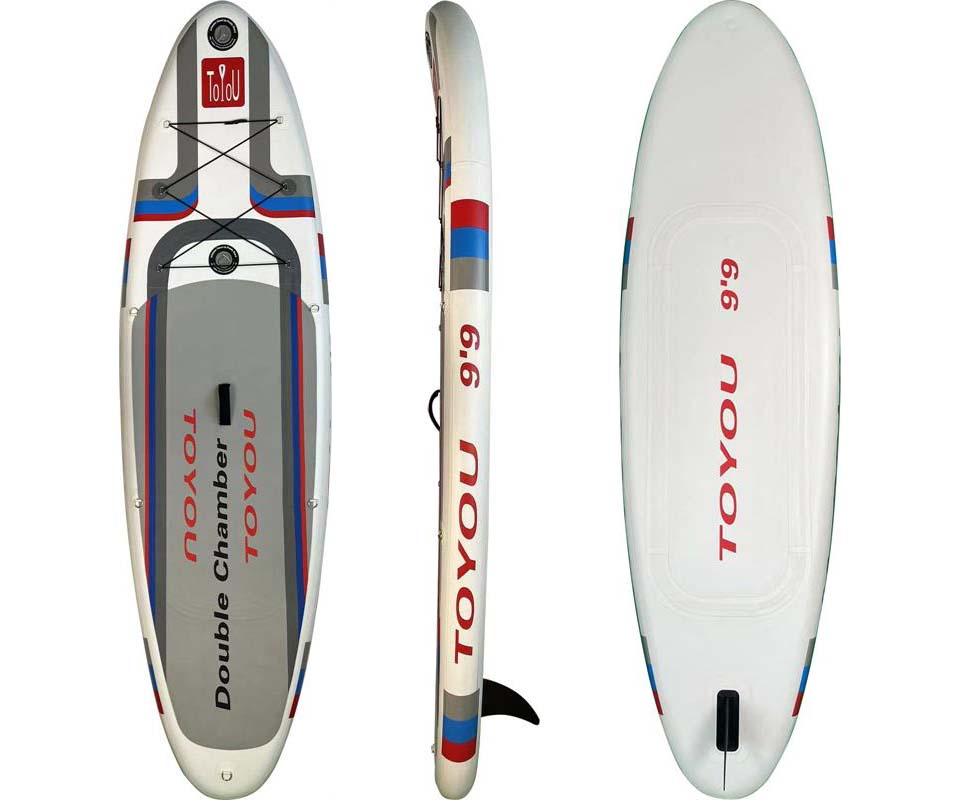Inflatable stand-up paddleboards (iSUPs) come in various sizes to accommodate different paddlers, skill levels, and activities. The size of an iSUP is typically expressed in terms of length, width, and thickness. Here’s a general guide to different sizes of inflatable SUP boards and their characteristics:
- Length:
- Short Boards (Under 10 feet):
- Shorter boards are more maneuverable, making them suitable for surfing or whitewater paddling. They are often preferred by more experienced paddlers.
- Medium-Length Boards (10-12 feet):
- Medium-length boards offer a good balance of stability and maneuverability. They are versatile and suitable for various activities, including all-around paddling and yoga.
- Long Boards (12 feet and above):
- Longer boards provide better tracking and glide, making them ideal for touring and covering longer distances. They are generally more stable but may be less maneuverable in certain conditions.
- Short Boards (Under 10 feet):
- Width:
- Narrow Boards (Under 30 inches):
- Narrow boards are faster and more efficient for touring but may sacrifice some stability. They are often preferred by more advanced paddlers.
- Medium-Width Boards (30-32 inches):
- Medium-width boards strike a balance between stability and speed. They are versatile and suitable for all-around paddling, yoga, and recreational use.
- Wide Boards (32 inches and above):
- Wide boards offer maximum stability, making them great for beginners, yoga, or activities where stability is crucial. However, they may sacrifice some speed.
- Narrow Boards (Under 30 inches):
- Thickness:
- Thin Boards (Under 5 inches):
- Thin boards are generally less stable but may be more suitable for experienced paddlers who prioritize performance, such as in surfing.
- Medium Thickness (5-6 inches):
- Medium-thickness boards are the most common and provide a good balance of stability and performance. They are suitable for various activities and paddlers of different skill levels.
- Thick Boards (6 inches and above):
- Thick boards offer maximum stability and buoyancy. They are suitable for beginners, yoga, and activities where stability is crucial. Thicker boards also tend to handle larger weight capacities.
- Thin Boards (Under 5 inches):
- Weight Capacity:
- Consider the weight capacity of the board, which is an important factor in ensuring stability and performance. Choose a board with a weight capacity that accommodates your weight along with any additional gear or passengers.

When selecting an inflatable SUP board, it’s essential to consider your skill level, intended activities, and preferences. For beginners, a stable and wider board may be preferable, while experienced paddlers might opt for a longer, narrower board for increased performance. Always check the manufacturer’s recommendations and guidelines for the specific model you are interested in.
